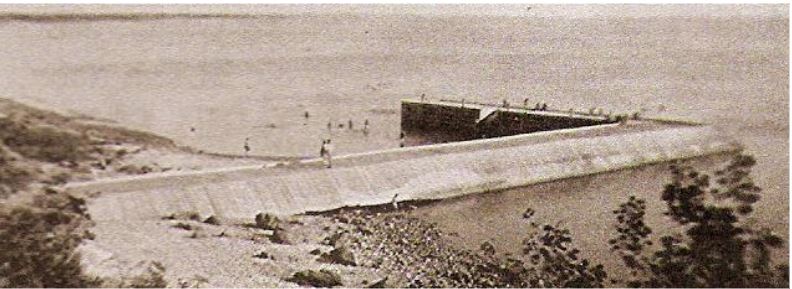One hundred years ago, ambitious businessmen like William Robinson and William Purvis left their marks on the shores of Lake Winnipeg.
Located along the La Vérendrye Trail (PTH #12), Grand Marais is the northernmost town in the Rural Municipality of St. Clements. First Nations peoples originally inhabited the region because of the abundance of fish found in the muddy waters. The seventeenth century French explorer Pierre Gaultier de Varennes de La Vérendrye referred to the area as Grand Marais, meaning “Big Marsh.”
During the mid to late nineteenth century, several retired Hudson’s Bay Company men journeyed to the area with their Native wives and children and built homes. After a large influx of immigration to Manitoba in the later part of the nineteenth century, several Polish, Ukrainian, and Russian families followed the gravel ridge from East Selkirk to the beach areas and built homes as well.

Commercial fishing became one of the main economic resources for Grand Marais. The Historic Fisherman’s Pier was central for this fishing industry. It was constructed in 1930 by Nelson River Construction and funded by the federal government. The wooden piles were installed in such a manner as to deflect the ice and strong wave action to help minimize damage to the Pier; this was achieved by slanting the siding of the Pier. For many years local fishermen caught an abundance of pickerel, pike, catfish, sturgeon and goldeye.
Even with its unique engineering, the dam could not withstand the sheer power of Lake Winnipeg. The remnants of the Pier are located at the current corner of Lakeview Avenue. and Grand Marais Boulevard. A few planks and a small stone peninsula are all that remain of this historic structure. Recently plans have been put underway by the Grand Marais Property Owner’s Association to restore the Pier’s staircase.
Early Fishing on Lake Winnipeg
The Fisherman’s Warf geocache site is located in Grand Marais, Manitoba, Canada at N 50º 33.018´ latitude and W 96º 38.038´ longitude. If you find the geocache and scan the QR code inside of it, it brings you here to learn more. Watch all of our videos on our YouTube Channel. Other heritage content can be found on our Red River North Heritage Youtube channel.
Transcription:
What remains of Fisherman’s Wharf lies as a relic of a golden age of great enterprise and fishing on Lake Winnipeg.
Even after Manitoba entered Confederation, fishing on the lake was a localized activity, conducted at stations spread over hundreds of miles of coastline.
That changed with the initiative of a few ambitious men. William Robinson is a young man from Guelph, Ontario who had experience laying railroad tracks for the CPR.
In the late 1870s, he toured Lake Winnipeg on the Colvile’s maiden voyage, and learned of the lake’s isolated fishing and lumbering activities.
Sensing opportunity, he proceeded to build steamboats of his own. He used them to forge a network that brought shipments of fish from all over the lake to freezers in Selkirk for export by rail to the United States.
Robinson brought up small businesses all around the lake.
By the 1890s, his partnership with the Dominion Fish Company dealt with 3 million pounds of fish every year.
It was left to an adventurous Scot named William Purvis to challenge Robinson’s empire. Purvis left Manitoulin Island on Lake Huron, and passed through Manitoba to seek his fortunes in the Klondike Gold Rush.
His hopes unfulfilled, he returned home and moved his family west to Selkirk around the year 1900.
Purvis and his cousin, Joe Simpson, joined with three other men to form the Northern Fish Company.
They successfully carved out a market of their own in the rich fishing world of Lake Winnipeg. Purvis and his sons became famous as ship builders, as they supplied their company with steamers.
Fisherman’s Wharf was built towards the end of the age of Robinson and Purvis. The Depression and World Wars set back the lake’s fishing industry. The great ventures of the early fishing company pioneers, however, left an enduring mark on the towns and communities of Lake Winnipeg.